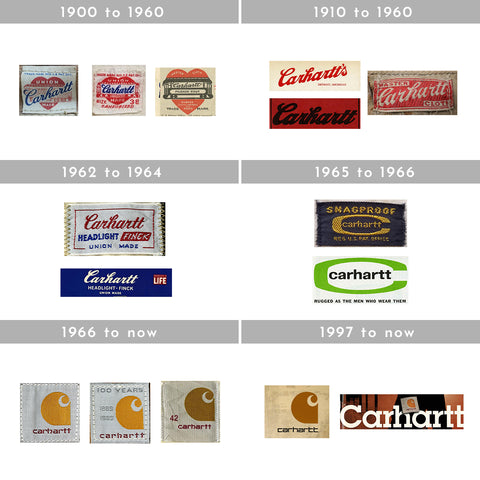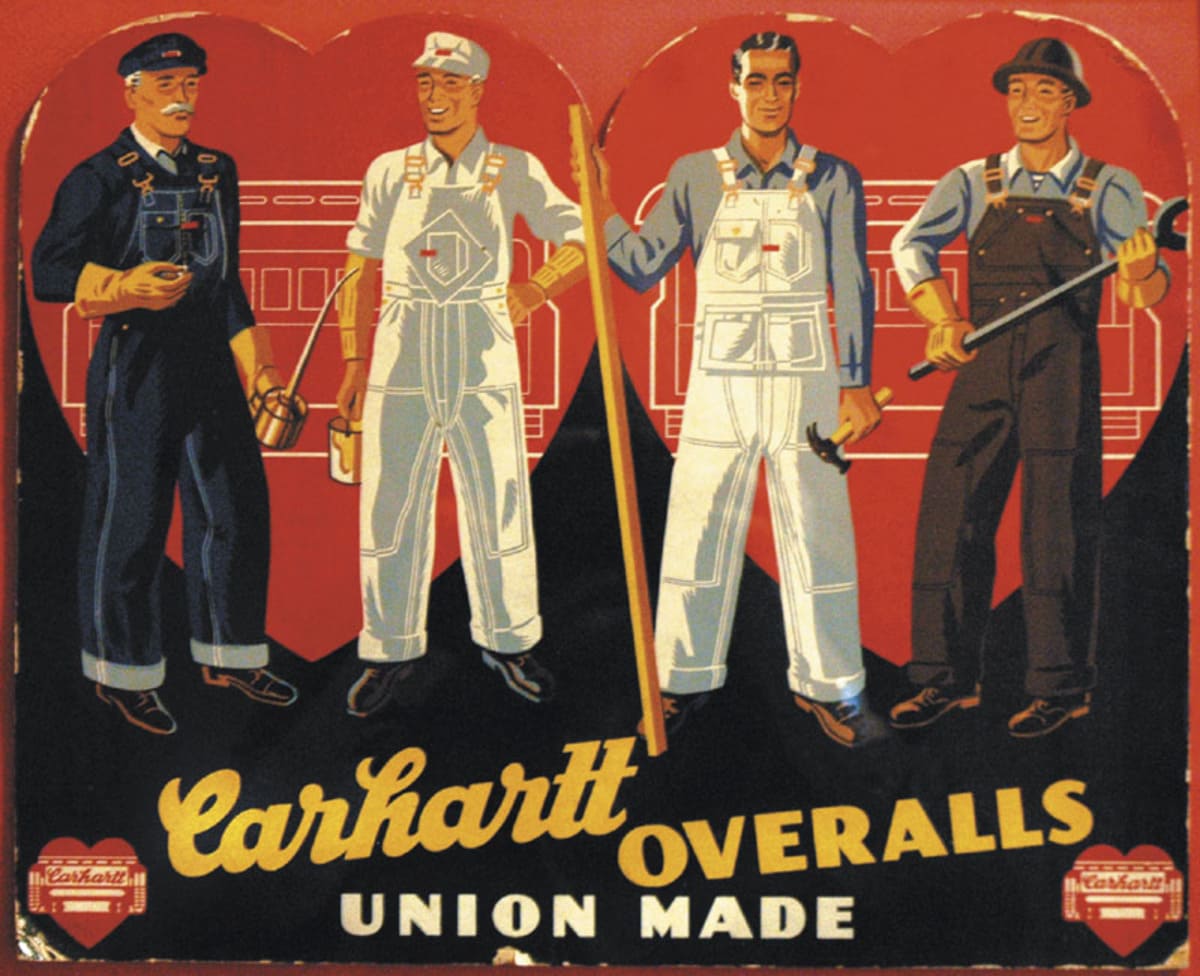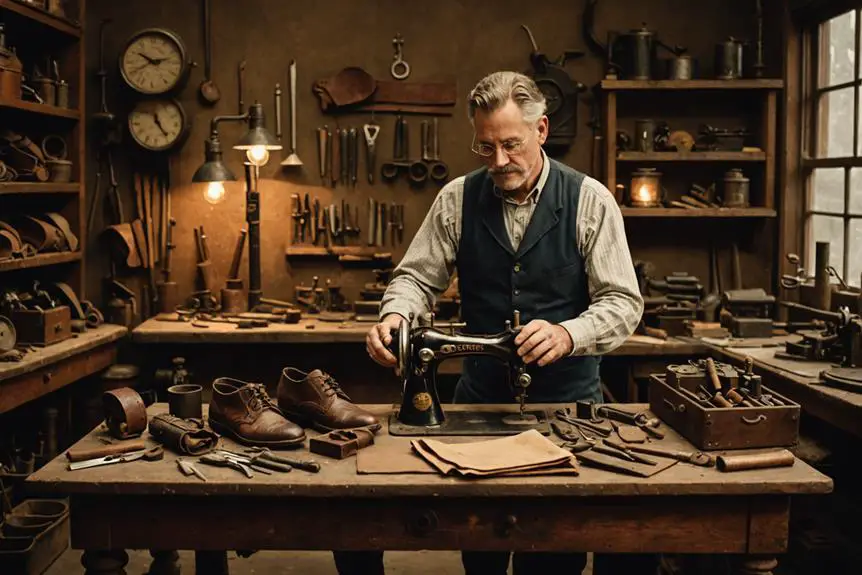Carhartt is, without a doubt, the GOAT of workwear. For over a century, this brand has reigned supreme, shrugging off countless challengers and cementing its legacy with a resilience matched only by the clothes themselves. Founded in 1889 by Hamilton Carhartt, the brand was born from a simple goal: to make workwear that could handle the demands of the toughest jobs out there. And they nailed it. With each piece made to endure brutal conditions, Carhartt set the gold standard, creating gear so durable that you might even come across an original piece from way back in the day, still holding up in some dusty closet or antique store.
Now, imagine you do stumble upon one of these relics. That little Carhartt tag could be worth its weight in gold—these old-school Carhartt pieces are vintage treasures that collectors would pay a pretty penny to get their hands on. The older and rarer the piece, the more it’s worth, and some vintage Carhartt finds are practically lottery-level paydays. The demand for vintage Carhartt isn’t just about its functionality; it’s about owning a piece of American history, a testament to a time when clothing was built to survive the grind, not just for a season but for generations.
If you’re lucky enough to have a Carhartt piece that’s been passed down or to find one in a thrift shop, you’d better know what you’re looking at. Learn how to tell if your Carhartt is genuinely vintage and, if it is, from which era. Whether it’s from the early 1900s, mid-century, or even the 1980s, each era has its own unique markings, logos, and features that add to its value and story. So, do your research, because this might just be the strangest, most pleasant payday you’ll ever come across, all thanks to a brand that’s never gone out of style.
Carhartt Commercial that perfectly symbolises a simple commitment to quality
How to tell if Carhartt is vintage from the Logo
Carhartt has always tied its strong brand identity to its logo and used this recognisable imagery as a symbol of its quality craftsmanship. Founder Hamilton Carhartt himself iterated that ‘the famous Car and Heart buttons on Carhartt overalls are used to protect the buyer from any substation. Every pair of genuine Carhartt’s carries them.’ This means that using the different Carhartt logos as reference points for seeing how old your Carhartt’s is a great method to help tell if Carhartt is vintage.
The Car plus ‘Heart’
- This was Carhartt’s very first logo and was used from 1889 to 1900.
- Interestingly, the logo did not feature the brand name and instead focused on the fact that Carhartt was union made and the products that they had to offer.
- This logo was featured on garment labels.
- The combination of a diamond shape placed on a rectangular logo was a common logo design at this time and meant that the company employed union labour.

1889 – 1900 Car plus Heart logo
Hamilton Carhartt Company
- This logo was only used around the 1900s.
- It was never used for garment labels and instead was featured on marketing materials.
Car’heart’ Logo
- Used from 1900 to the mid-1960s.
- The very first heart shaped logos from Carhartt used block capital letters, and then later versions employed the script design of the Carhartt brand name.
- These logos were used through all aspects of Carhartt, including garment labels, buttons, letterheads, and other marketing materials.
- For marketing materials, a slew of different slogans appeared within the heart which included ‘Union Made’, ‘Master Cloth’, ‘8 Hour Work Day’ and ‘From Mill to Millions’.
- As can be seen, the Carhartt script logos varied between a horizontal and diagonal direction, with the diagonal version emerging around the 1950s.

1900 – 1960s Carheart logo
The Script Logo
- The Carhartt script logo was used from 1910 to the mid-1960s.
- It was used everywhere including garment labels, buttons, letterheads, and other marketing materials.
- Appeared alternatively as Carhartt or Carhartt’s.

1910 – 1960s Script logo
Carhartt Headlight Finck
- Carhartt’s logo from 1962 to 1964.
- This logo was designed to capitalize on Carhartt’s mergers with Headlight Overalls and W.M. Finck and Company, two other well-known high-quality workwear brands.
- This combined company branding was used on garment labels and marketing materials.
The First ‘C’ Carhartt Symbol
- Only used from 1965 to 1966.
- The logo rebranding was launched in line with new product lines such as shorts and slim fit pants and ranch wear (with the former falling flat and the latter becoming a timeless classic).
- Used for both marketing materials and garment labels.
The Current ‘C’
- Debuted in 1966 and is still used to this day.
- After experimenting with some new products and marketing strategies throughout the 1960s, Carhartt decided to refocus its efforts on its core products with the launch of this new logo.
- The new logo was designed by Carhartt executives in collaboration with a design agency, and Herbert Jaffe Inc. sewed the first concept version of the logo.
- In 1989, Carhartt released a limited-edition version of this logo that celebrated its 100-year anniversary.
- The font of the logo has varied slightly over the years, particularly in regard to marketing, but has remained largely unchanged when it comes to garment labels since 1967.

1997 – now Modern logos

Carhartt logo through the years
How to tell if Carhartt is vintage from the Product Name and Design
Carhartt historically focused on perfecting a select few products and designs. This means that working out what Carhartt you have and when it was made isn’t as difficult as most other brands. Here’s a list of some of their most popular items, their features, and when they were made:
| Product Type | Product Name | Year of Release |
|---|---|---|
| Overalls | Various | 1889 |
| Denim Dungarees/Jeans | Denim Waist Overalls | 1900 |
| Vests | Various | 1900 |
| Gloves | Various | 1900 |
| Flannel Shirts | Wool Flannel Shirt | 1900 |
| Brown Duck | Cutch Brown; Van Dyke Brown | 1915 |
| Chore Coat | Coat | 1917 |
| Coveralls | Coveralls; Allovers | 1917 |
| Caps | Various | 1928 |
| Duck Carpenter Bib Overall | Carpenter’s Overall | 1928 |
| Chambray Shirt | Heavy Chambray Shirt | 1928 |
| Rugged Outdoors/Hunting Wear | Super Dux | 1930 |
| Socks | Various | 1930 |
| Bi-swing Back | Bi-swing Back | 1938 |
| Jackets | Various | 1938 |
| Twill Pants | Twill Sport Pant | 1938 |
| Twill Work Shirt | Cadet Twill Coat Style Shirt | 1938 |
| Double Front Work Dungaree | Waist Overall, Double Knee | 1939 |
| Detroit Jacket | Zipper Jacket | 1954 |
| Duck Coveralls | Brown Duck Quilt Lined Coverall | 1968 |
| Washed Duck Work Pant | Full Cut Western Style Jean | 1970 |
| Active Jacket | Hooded Jacket | 1975 |
| Sweatshirts | Sweatshirts | 1982 |
| Traditional Coat | Heavy Quilt Lined Coat | 1983 |
| Watch Hat | Knit Watch Cap | 1987 |
| Hooded Pullover Sweatshirt | Midweight Fleece Hooded Pullover Sweatshirt | 2000 |
| Hooded Logo Sweatshirts | Midweight Hooded Logo-Sleeve Sweatshirt | 2009 |
How to tell if Carhartt is vintage from the Tags and Product Code
Struggling with vintage tags? Submit a picture on our vintage tag identification page, and we’ll take care of the rest!
Some Carhartt tags have a date code on them in the form of 3 or 4 digits. The last 2 represent the year and the first one or two represents the month. Check out the examples below. The 598 at the bottom left of the first tag shows that this item was made in 05/1998. On the second tag, the 0301 at the top of the tag refers to the 03/2001 and on the third tag the 0205 on the left tells us it was made in 02/2005.
Dating vintage clothes is more of an art than a science. Clothing companies are often quite coy about when their clothes are from, but hopefully this guide has taken you a step closer to working out if your Carhartt is vintage or not. But if you’re still struggling to figure it out, you can submit your tags here for us to have a look at and try and investigate.

Carhartt tags





I’m not sure what year this was made.
Men’s or women’s
How to determine it size
Thank you
Experience unparalleled luxury and safety with Airport Transfers Bahamas. Our top-class fleet ensures that every journey offers both exceptional comfort and the highest safety standards for our clients.